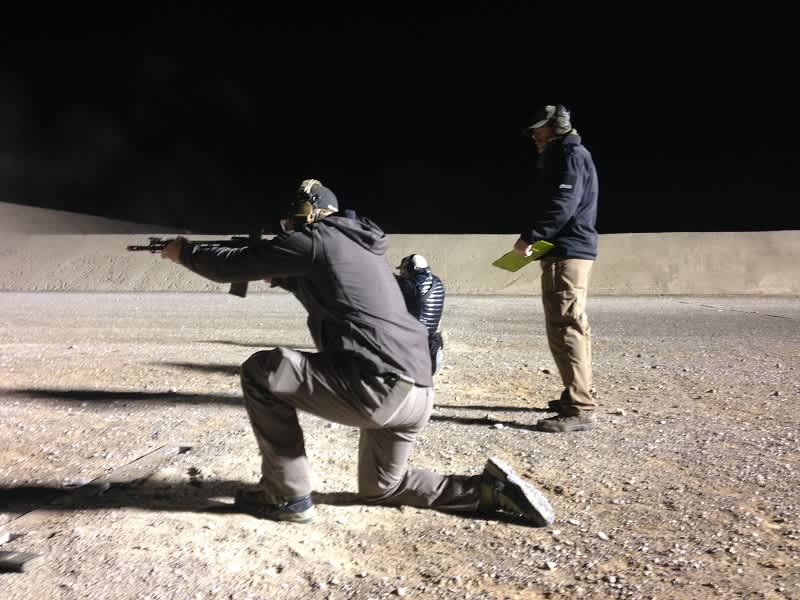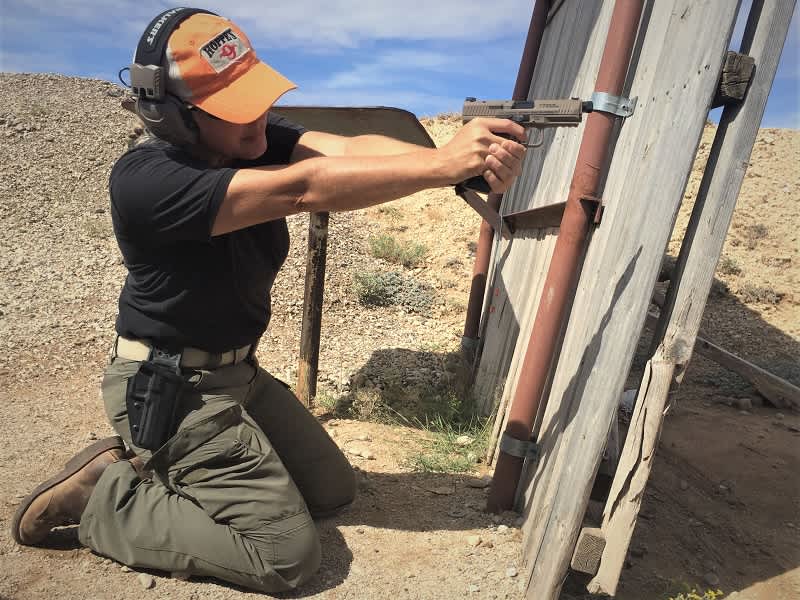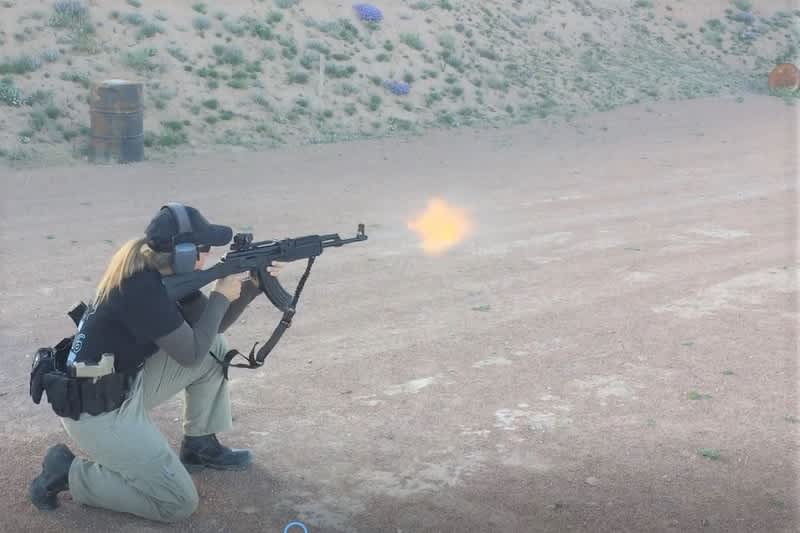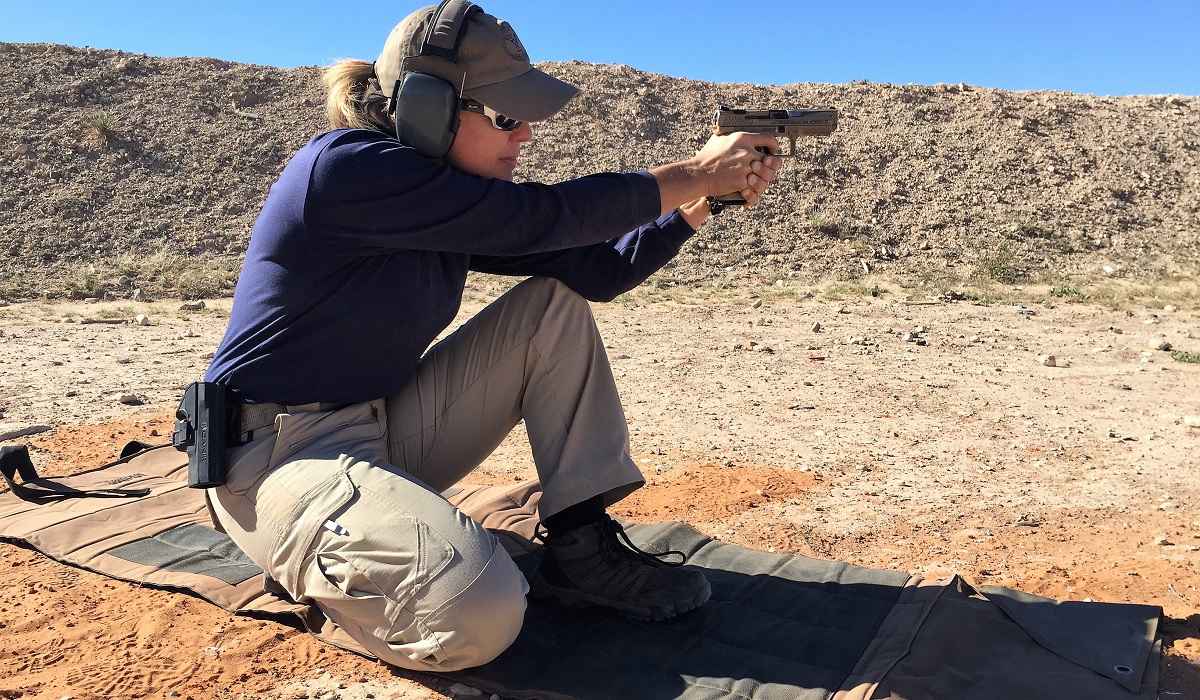Products You May Like
Time at the range, and even time spent dry firing, should be used to do more than keep marksmanship on point. Training for defensive or hunting-oriented shooting or should include practice of real-world possibilities, including shooting from behind cover and in odd positions. Competence with non-traditional positions, like kneeling, has many advantages, including better stability for distance shooting, less visibility to game animals or a violent actor, and fatigue management.
This article looks at three common kneeling positions, any of which can be used for rifle or handgun use, with braced kneeling being most common and practical for rifle deployment.
When practicing any of these techniques, safety and tactical soundness dictate that, whenever possible, the gun should be out of the holster or sling carry position before dropping into kneeling position, and should stay aimed at the downrange area until you’re standing again. It’s easy to cover one’s own body with the muzzle when drawing or reholstering while down. As you rise from kneeling in a defensive situation, it’s possible that new actions or threats can appear. As a rule, sink to and recover from kneeling should be done with a firing grip on the gun, muzzle downrange, finger off trigger.
In every variant of this position, develop the habit of bending the ankle joint(s) so the foot, or feet, without the sole rested on the ground isn’t wobbling on the point of the toes, ballerina—like. One side of the foot or the other should be flattened toward the ground. Allowing the toe end of a shoe or boot to rest on the ground creates instability that will be transferred to the muzzle. A wobbling foot can thus decrease accuracy.

Injuries and arthritic joints can add difficulty and danger to the process of getting up from kneeling, for those who suffer from those conditions. Never use a long gun as a crutch while getting up. When using a pistol, the support hand can be used on a knee to aid in standing while the “gun hand” keeps the muzzle pointed downrange; finger off trigger. There’s no shame in laying a gun on the ground, standing up, and then picking up the gun if that’s what it takes to be safe.
Here, in order of fastest to slowest, with a perhaps inverse relationship to stability, are three kneeling positions to add to your marksmanship repertoire.
1. Single-knee kneel
For most people, this is the easiest and fastest method of dropping into kneeling position. Simply bend the strong-side knee, if the terrain permits, and take it to the ground, keeping the support side foot flat on the ground and support side knee at a 90-degree angle.
To recover from a single-knee kneel, weight both feet evenly as you rise and simultaneously do a visual search of the area.
2. Double-knee or California kneel

This method is primarily for handgun shooting. Unless the area has sharp rocks or other potential sources of pokey pain, simply bend both knees while holding the gun in a firing grip, until both knees are on the ground. In this most flexible of the three methods discussed here, shooting height can be adjusted, raising the upper body higher to overcome barricades or terrain features, or sink the butt all the way to the heels for great stability. Sideways mobility for barricade shooting is also possible in this style of kneeling.
To rise, those with sound knees and no concern for the surrounding situation can simply snap the body upward, reversing the motion of dropping to prone. A slower method that allows time to look around as well as offers some support for creaky joints is to first place the support side foot forward, creating a single-knee kneel. From there, the support hand can be employed on the same side knee as an assist.
3. Braced kneel
Braced kneeling can be a great choice for a firing position while hunting or firing longer distances during practice. It takes a bit longer to settle into, but offers the great advantage of a second point of contact for stability.

Begin by turning about 35 degree rom facing the target, toward your strong (firing hand) side. With the support side foot facing the target, drop down, folding the strong side leg under as you go. With the side of the strong side foot flat on the ground, lean forward, bracing your support arm elbow just in front of the same side kneecap. If your proportions are such that you can’t fold that far, brace the elbow behind the knee. Either way, an elbow-on-leg-muscle rest is created, with the elbow (or just above it, at the bottom of the tricep) in front of the patella being a little better for recoil management.
Settle into this position as terrain and view of the target allow. Greater stability can be achieved by sinking your butt onto the back foot. While braced kneeling is not likely to be comfortable for an extended period, it can make the difference in your confidence to take that long-distance pistol shot, or for improved management of the inevitable wobble of a rifle supported only with hands.
Experiment now; apply later
Whether your shooting is oriented to tactics, hunting, or recreation, adding these kneeling positions to your comfort zone of gun handling will make you better able to take advantage of concealing objects for protection and/or lower visibility, and get greater enjoyment from your practice time—including dry fire. Stay attuned to muzzle safety and finger discipline, and enjoy!
Practice safely. OutdoorHub, any of its associates, and this writer bear no responsibility for the consequences of any unintentional or negligent discharge(s) of a firearm during practice related to the advice shared here.

